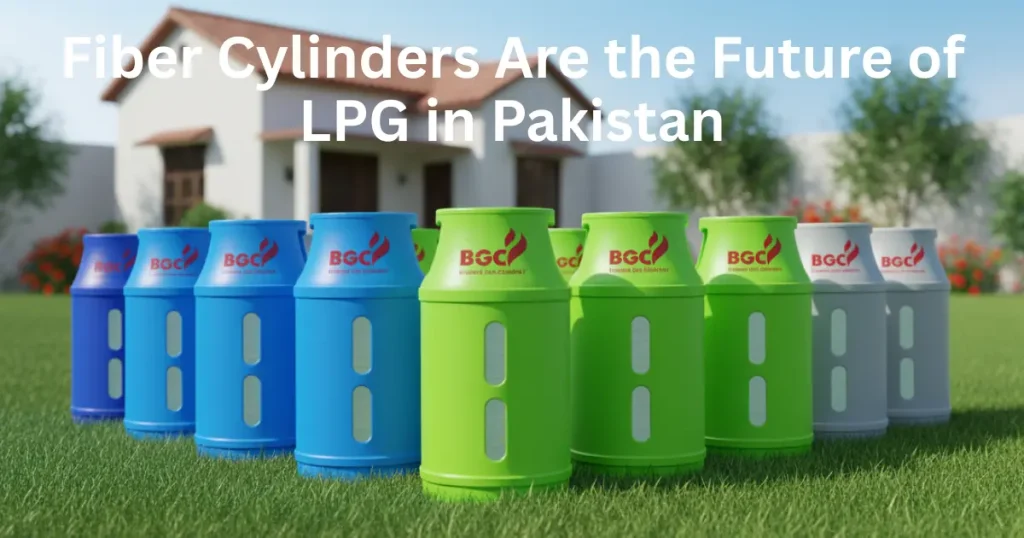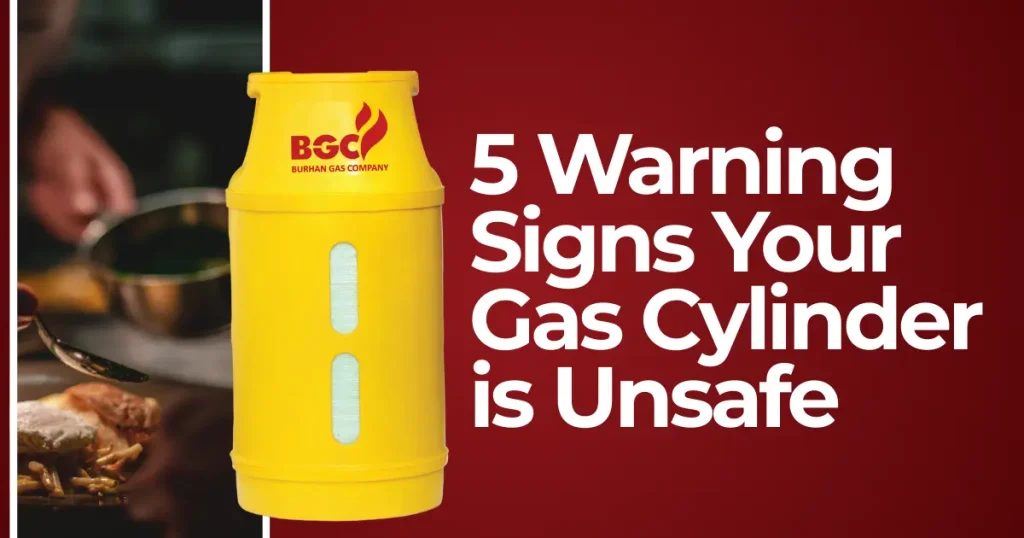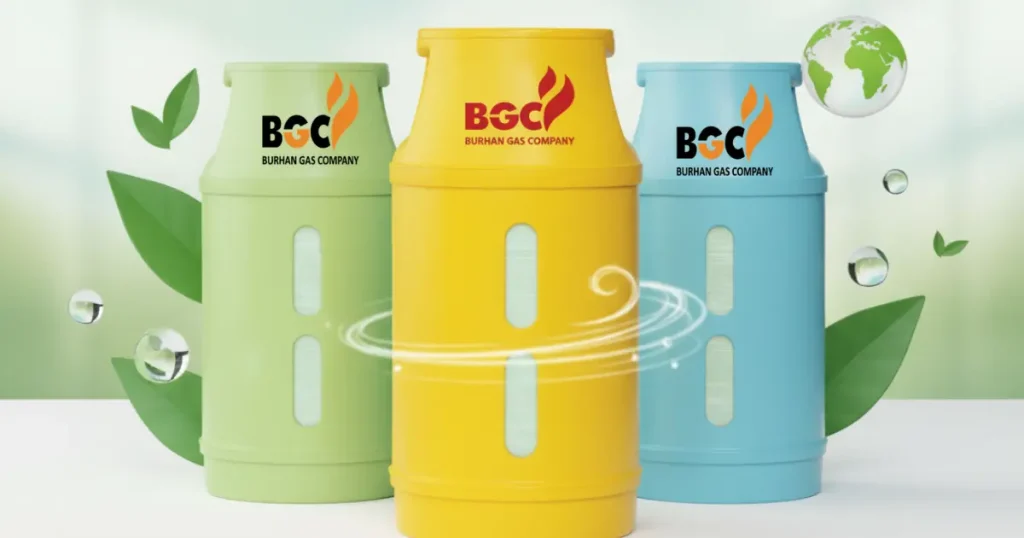Pakistan’s energy sector is changing fast. With natural gas reserves running low and energy needs increasing every year, the country is turning toward LPG (Liquefied Petroleum Gas) as a major alternative source. But there’s one big problem — most LPG users still rely on old steel cylinders, which are unsafe, outdated, and environmentally harmful.
Now, a new solution is stepping in — composite LPG cylinders — lighter, safer, and far more durable. These cylinders are not just a product; they represent the future of safe and sustainable energy in Pakistan.
Pakistan’s LPG Market: Growing Fast, But With Challenges
Pakistan’s LPG market has grown rapidly, reaching a value of PKR 1.7 billion in 2024, up 43% from the previous year. The country now consumes about 7.8 million tonnes of LPG annually, with homes using most of it.
However, local production only covers about half the total demand, while the rest is imported. This makes LPG an important part of Pakistan’s energy security, contributing about 1.6% to the national energy mix.
Experts predict LPG demand could reach 14.5 million tonnes of oil equivalent (MTOE) by 2044. But growth is held back by one major issue — safety.
The Safety Problem with Steel Cylinders
The current LPG system is full of risks. Many cylinders and bowsers are unregistered, and safety laws are often ignored. OGRA’s safety bill has been pending for years, leaving consumers exposed to danger.
The main problems with steel cylinders include:
- Explosion risk: They can burst under high pressure or heat, leading to deadly accidents.
- Rust and corrosion: Over time, steel weakens and leaks, increasing fire and health risks.
- Illegal refilling and gas theft: Unsafe practices are common, putting lives at risk.
- Poor regulation: Despite OGRA’s efforts, low-quality cylinders remain in use nationwide.
Pakistan’s LPG industry clearly needs a safer solution — and that’s where composite cylinders come in.
Composite Fiber Cylinders – The Safer, Smarter Choice
Composite cylinders are made from strong fiberglass and plastic materials instead of metal. This makes them non-explosive, lightweight, and corrosion-free. These modern cylinders are already popular in developed countries and are now entering Pakistan’s market.
Why They’re Safer
- Designed to crack slowly instead of exploding.
- Stay stable under high temperatures.
- Completely rust-proof and long-lasting.
- Fire-resistant and reliable in all weather conditions.
More Benefits for Everyday Users
Composite cylinders aren’t just safer — they’re smarter and easier to use:
- 50% lighter than steel cylinders — easier to carry, especially for women and elderly users.
- Last up to 21 years, saving long-term replacement costs.
- They are transparent, so users can easily see how much gas is left.
- No maintenance — no painting, no rust, and no stains.
- Eco-friendly — made from recyclable materials and require less energy to produce.
Environmental Impact and Sustainability
As Pakistan faces climate challenges, eco-friendly innovations are essential. Composite cylinders help reduce pollution and carbon emissions.
Environmental benefits include:
- Less energy is used in manufacturing and transport.
- Recyclable materials that support a circular economy.
- A longer lifespan means less waste over time.
Companies like Burhan Gas Company are leading this shift, producing OGRA-approved composite cylinders locally and focusing on a greener, safer energy future.
Market Growth and Key Players
The composite LPG cylinder market is expanding quickly worldwide. Currently, these cylinders hold about 13% of the global market, while steel still dominates with 87% — showing huge growth potential.
In Pakistan, Burhan Gas Company is pioneering this change as the first local manufacturer of composite cylinders and the third producer globally. These cylinders meet both national and international safety standards.
Government Regulations and Future Outlook
The Oil and Gas Regulatory Authority (OGRA) oversees LPG safety standards in Pakistan under the LPG (Production & Distribution) Rules, 2001. OGRA has introduced technical standards and testing requirements for composite cylinders. However, stricter enforcement and new legislation are still needed.
The LPG Industry Amendment Bill, which would improve safety and quality control, has been pending for over two years. Once passed, it could greatly speed up the country’s transition toward safer LPG solutions.
The Road Ahead: Why the Future is Composite
The global market for composite cylinders is expected to grow from USD 1.38 billion in 2025 to USD 2.03 billion by 2032, and Pakistan is ready to be part of this shift.
Here’s why:
- Growing energy demand needs safer storage options.
- Urbanization is increasing LPG usage in homes and businesses.
- People are becoming more aware of safety and environmental issues.
- Government support for modern energy infrastructure is increasing.
The primary challenges are awareness and affordability. While composite cylinders cost more upfront, they offer better value, durability, and peace of mind in the long run.
Conclusion
Pakistan’s LPG sector is at a turning point. The era of old steel cylinders is fading — and the future belongs to safe, lightweight, and eco-friendly composite cylinders.
These cylinders bring zero explosion risk, 50% less weight, and 21+ years of lifespan, while also supporting the country’s sustainability goals. The technology is proven, available, and already being produced locally.
Now, it’s time for consumers, companies, and policymakers to work together and make the switch. Every delay means more accidents, more losses, and more missed opportunities.
The future of LPG in Pakistan is composite, and that future should start today.





